by Billy Sweet | Feb 29, 2020 | Chimney Maintenance
There are many issues that can arise during the winter months—things that affect the bills you pay and the safety of your home. The problems that affect your home this winter are not always caused by your fire appliance, your heater, or even neglect. Many problems arise because of weather, storms, damage, or other things entirely out of our control. In order for our customers to have the safest home possible this winter and every winter, we recommend these tips.
Gutters and Drains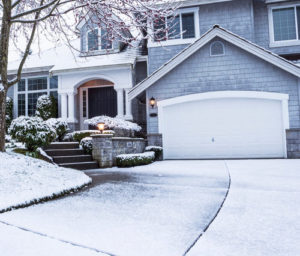
Gutters and outside drains are great assets during freezing winters and wet springs. However, if they aren’t properly maintained, they can become a hazard. Leaves and debris left inside gutters and drains can cause a clog, allow your water flow to stall and freeze, and even lead to leaks and water damage outside the gutter system. A gutter problem doesn’t just affect the roof, eaves, and house. An overflowing or damaged gutter can lead to washout and damage to your landscaping and direct rainwater to your basement and foundation instead of designated drainage areas.
Weatherizing Windows
The only windows that do not need to be weatherized are those that are double-pane storm windows. There are specific models and brands of windows that will insulate your home despite the outside weather and temperature, but these windows are expensive and not usually in older homes. If you have a standard single-pane window, it should be properly winterized in order to save you money and prevent damage.
Screen Removal – If your windows have an outer screen, the screen should be removed during winter prep. Leaving the screens in the window can allow water to pass through the screen and then freeze against the window and the window sill. This not only leads to a temperature drop but also can ruin a wooden window frame and sill. Remove the screen and store upright in a storage closet, basement, or attic.
Storm Window Panes – If your single-pane windows have a screen, look around the basement and attic for replacement storm windows. These panes slip right into the space where the screen is removed. If your windows do not have storm window panes, remove the screen and plastic over your windows for insulation.
Window Insulation – Whether you have storm windows or simple single-pane windows, you can still add clear plastic insulation to your windows to help keep the cold out and keep your warm air in. You can hire someone to winterize your windows or purchase a window insulation kit at your local home improvement store to improve your home’s heat efficiency.
Lawn Maintenance
By the end of summer, we are excited to be finished with lawn care. We’re excited for the leaves to begin falling and celebrate as we put that weed trimmer and lawnmower in the shed for the winter. While we as homeowners are understandably finished with lawn care when autumn arrives, it’s important to trim your lawn before winter is in full force. Oftentimes, the grass stops growing, so we fail to cut it one last time. This makes raking more difficult when necessary and can hide hazards beneath high grass and then snow as fall turns to winter and winter to spring. Cutting your grass before winter arrives will mean a seamless transition back to spring and summer and will mean a healthier lawn and healthier microorganisms that help cultivate healthy soil.
Air Duct and Dryer Vent Maintenance
During winter months, we use air ducts and dryer vents more often than other times of the year. You may not even realize it, but you are likely spending more time than ever indoors, breathing recycled air that has been moving through your HVAC system over and over. You are also likely using the clothes dryer more often than in warmer months if you use a clothesline during the warmer months.
Whatever the reason, these systems are being used, and are oftentimes neglected. In order for a more efficient and safer central air and heating system, make sure you have your air ducts cleaned and sanitized as needed. When the system is maintained properly it will use less energy, will cycle and filter the air in your home better, and will last longer. Similarly, the clothes dryer vent will work better when it is cleaned annually. Not only will a clean dryer vent keep your family safe this winter, but it will help your dryer work better, work safely, use less energy, and last longer. Running your dryer multiple times for one load of clothes is a sign that there is a problem—and it’s a sign that costs you money! Schedule dryer maintenance now and see how much it saves you.
Chimney and Fireplace Maintenance
Homes that have a fireplace and chimney system are safer when they are maintained properly. Don’t take our word for it! The Chimney Safety Institute of America (CSIA) and the National Fire Protection Association (NFPA) both agree that the safest and most efficient chimney systems are those that are cleaned regularly and inspected annually. Ideally, a homeowner would schedule these important services before the burn season, but it isn’t too late.
Residents in Boston, North Shore, and Portland area can call and schedule a sweep or inspection with Billy Sweet Chimney Sweep anytime, year-round. Our aim is to make safe homes and warm hearths. Dial 617-469-4528 or contact us online.
by Billy Sweet | Aug 14, 2019 | Chimney Repair
There are many things that can go wrong with your masonry chimney over the years, and water is your chimney’s number one enemy. No matter how well-your chimney is constructed, time and weather can lead to damage called spalling. Many homes experience spalling, though not all homeowners know what it’s called, how to identify it, or what to do about it. At Billy Sweet Chimney Sweep, we can help!
Spalling Masonry
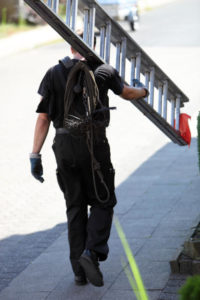 When mortars crack, flake, and fall away, the bricks can become unstable and even loosen completely. This is called spalling, and it can eventually result in crumbling brick and mortar, which can become a serious hazard if you don’t address it timely. If you notice cracking mortar, gapped masonry, or brick pieces on the roof or yard below, you need to call a certified professional right away to address the proper repairs.
When mortars crack, flake, and fall away, the bricks can become unstable and even loosen completely. This is called spalling, and it can eventually result in crumbling brick and mortar, which can become a serious hazard if you don’t address it timely. If you notice cracking mortar, gapped masonry, or brick pieces on the roof or yard below, you need to call a certified professional right away to address the proper repairs.
Repairing Spalling Masonry
The only way to properly repair spalling masonry is by carefully removing the affected bricks and mortar. A certified chimney sweep will mix new mortar to match the old mortar in strength, consistency, and color. This step is extremely important because failing to match the mortar exactly will result in a weak chimney. Once the mortar is mixed, the bricks are replaced and the result is a fully restored chimney that shows no evidence of a repair.
When the job is done improperly, it can detract from the look of the chimney and decrease your home’s value. This entire process is called tuckpointing or repointing. Only certified professionals should do it, and most amateurs don’t have the proper skills to do it. When you’re scheduling these important services, it’s important to choose chimney experts who have plenty of experience and knowledge of all types of masonry.
Billy Sweet Chimney Sweep Fixes Masonry
No matter the size of your chimney or the type of stone, we can help repair it. At Billy Sweet Chimney Sweep, we have the experience and the technique to get even the toughest jobs done. We know which materials to use and how so that your chimney will expand and contract as necessary. Do you think your chimney masonry needs some attention? Schedule a chimney inspection with our team so that your system is safe and ready for fall.
In addition to tuckpointing, we also repair crowns, flue liners, and leaks. Our team of expert technicians doesn’t just repair damage; we correct the problem that caused the damage in the first place. In order to prevent such damage before it starts, we also offer waterproofing services for all masonry structures.
Our vapor-permeable water repellent allows the chimney to breathe while keeping water molecules from getting through. This product penetrates deeply into the masonry, protecting it and preventing water leaks year after year. Don’t just repair masonry damage, let us help you prevent it. Call Billy Sweet Chimney Sweep at 617-469-4528 or request an appointment online.
by Billy Sweet | May 3, 2015 | Chimney Masonry Maintenance
There are masonry fireplaces and chimneys and there are pre-fab fireplaces and chimneys. Masonry fireplaces and chimneys are made for mortar and bricks, block, or stone, while pre-fab fireplaces are made of metal and steel. Billy Sweet Chimney Sweep has specialized in maintaining chimneys and fireplaces for over 30 years and reiterates the recommendations of the Chimney Safety Institute of America (CSIA) and Hamon Corporation.
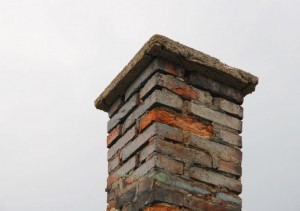
The CSIA explains why proper maintenance of masonry chimney is so important. “All masonry chimney construction materials, except stone, will suffer accelerated deterioration as a result of prolonged contact with water. Masonry materials deteriorate quickly when exposed to the freeze/thaw process, in which moisture that has penetrated the materials periodically freezes and expands causing undue stress. Water in the chimney also causes rust in steel and cast iron, weakening or destroying the metal parts. Read more at the CSIA’s website.
Chimneys in New England are exposed to many months of constant freezing and thawing, along with exposure to rain, and intense heat, even lighting. Damage to your chimney structure means that the chimney cannot function properly and therefore exposes homeowners to fire risks, seepage of toxic gasses. Damaged masonry weakens the integrity of your home’s structure. Water causes more damages to chimneys than fires. It can cause both interior and exterior damage.
Out of Sight–Out of Mind
With such great risk caused by masonry damage, why is the proper maintenance of masonry chimneys so often overlooked by homeowners? Out of sight out of mind…until there is a problem.
Yearly inspections are the first step to maintaining your masonry chimney. During the inspection the chimney technician will look for cracks, missing bricks or blocks, water staining, and deterioration. If there are any signs of weakening, gaps, or damage, repairs can be made before small cracks become major issues.
During the inspection special attention will be paid to ensuring the chimney crown, also known as the chimney wash, is fully functional. As the CSIA explains in the homeowner’s resources section of their website, “Most masonry chimneys are built with an inadequate crown constructed from common mortar mix that is not designed for years of weather abuse without cracking, chipping or deteriorating. A proper chimney crown should be constructed of a Portland cement-based mixture and cast or formed so it provides an overhang projecting beyond all sides of the chimney by a minimum of two inches. The flue liner tile should also project above the crown a minimum of two inches.
When masonry issues are found, proper repairs should be done by a trained professional. The outside of the chimney needs to be thoroughly cleaned and all masonry repairs done before any waterproofing materials are used. Your chimney professional will know the best waterproofing agents to use to seal out water. Homeowners should not attempt to make the masonry or waterproofing repairs themselves and using paint or clear sealants instead of professional products will cause further damage by trapping the wetness rather than elevating it.
Commercial Masonry Chimneys Need Care Too.
From an industrial point of view, when it comes to maintenance, the chimney stacks at commercial and industrial sites are just as overlooked as they are on residential sites. Hamon Corporation is a group of international companies dedicated to providing “high quality innovative solutions to meet customer needs for energy efficiency and a clean environment”. Hamon urges plant and commercial maintenance teams to recognize that proper maintenance means “extended life for chimney and stacks. These passive structures are often over looked in maintenance schedules.” In an article by Arun K. Bhowmik from Hamon Custodis, Bhowmik cautions, “Chimneys are basically passive structures with few mechanical parts that require maintenance attention to keep them functional. Because of this, it is easy to overlook them – but doing so can be costly.” He goes on,” Chimneys and stacks have only one function: dispersing flue gas into the atmosphere. In the process of fulfilling that function, (chimneys) are exposed to harsh environments, both inside and outside. Flue gas, with its abrasive and corrosive characteristics, can damage the structural materials of the chimney or liner. Climatic conditions, ranging from high winds to extreme cold, place extreme stress on the structure.” To read his entire article on proper industrial chimney maintenance, click here.
When is the last time you had your masonry inspected? Are you guilty of the out of sight out of mind mentality? Don’t delay any longer; contact Bill Sweet Chimney Service today.
by Billy Sweet | Dec 31, 2014 | Neglecting Chimney Maintenance
At first glance, chimneys seem very robust. They live outside all year, exposed to the elements, and can withstand hundreds of degrees worth of heat, fire after fire. Despite all of this, however, chimneys do need some regular care to keep up with these high demands. Industry experts strongly recommend having the chimney swept and inspected at least once every year and for good reason. Failure to keep up with chimney maintenance can have some devastating consequences.
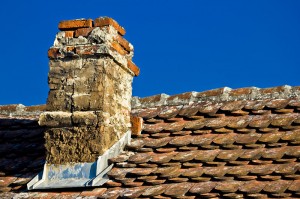
For wood burning fireplaces and stoves, the chimney will contain a buildup of a material called creosote. This black, tarry material clings to the surface of the chimney and can build up to the point of blocking air flow. Creosote is also highly flammable and is the cause of many destructive chimney fires. It burns at a much higher temperature than wood or gas, and once burning, it can be very difficult to extinguish. To keep your home and family safe, having a chimney sweep remove the creosote is imperative.
Debris found in the chimney can also take the form of an obstruction that reduces or blocks the flow of air. A common obstruction in the chimney is an animal and its nest. Warm chimneys attract small animals like birds, squirrels and raccoons that need a cozy space to wait out the winter. Unfortunately, this means trouble for the home owner. When the toxic fumes from the fire cannot escape through the chimney, they end up in the house. Not only does the creosote and soot leave messy, black residue on walls and furniture, but this lack of ventilation can actually be dangerous. Carbon monoxide, a product of combustion, can cause death when inhaled in high enough concentrations. It also has no color, smell, or taste, making it impossible to detect without relying on a special detector. To avoid the dangers of carbon monoxide from the fireplace, have a chimney sweep out every year.
Chimney inspections should also be done every year. The inspector examines the chimney from inside the house and from the roof to determine its structural soundness. A common problem that inspectors uncover is water damage. In a masonry chimney, water can enter the brick and mortar and cause cracking or even collapse. In all types of chimneys, water can also cause damage to the interior. If the flue lining is made of metal, water exposure can lead to rusted cracks or holes, which then exposes the house to further water damage, carbon monoxide leaks, and potential house fires. A simple inspection could determine if the chimney cap needs to be replaced, which can prevent these problems most of the time.
All in all, failure to keep up with chimney maintenance could cost you money in repairs, your house, and even your life. Instead of risking it, just call to schedule your annual sweep and inspection today. If you live near Boston, Massachusetts or Portland, Maine, contact Billy Sweet Chimney Sweep to speak with a professional.
by Billy Sweet | Nov 30, 2014 | Full Chimney Rebuild
All parts of a home will eventually need an upgrade because time wears down everything. Older homes, which are very common all along the east coast, generally need these updates sooner rather than later. Everything from contemporary style updates to energy savings updates can help bring an older home into the modern world. For homeowners looking ahead to the chilly winter, an update to the chimney or fireplace may be next on the to-do list.
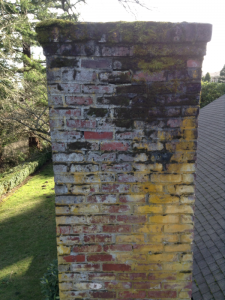
Chimneys can require a rebuild for a number of reasons, but the most common issue involves a partial or complete collapse of the chimney. Collapse occurs when the structure of the chimney has degraded, often due to long term exposure to harsh weather. Masonry chimneys, in particular, can suffer negative effects from weather. The materials used to construct a masonry chimney – brick, concrete, and mortar – all have a very porous nature, meaning they readily absorb water. Absorbing water alone does not have damaging consequences, but when the temperatures drop below freezing, the issues begin. In freezing weather, water undergoes a freeze and thaw cycle in which it continually expands and contracts. The bricks and concrete saturated with water also contract and expand with the water inside, and this results in degraded materials over time. First, the mortar will crack and fall from between the bricks, and the concrete will split. Then, the bricks come loose, and the entire structure loses its integrity. Eventually, the chimney could collapse.
Other problems that may result in a chimney rebuild include earthquakes and chimney fires. Earthquakes can cause irreparable structural damage to the chimney, and older chimneys usually do not have the stabilizing steel rebar that modern chimneys use to protect against this type of impact damage. The rebuilt masonry chimney would contain this rebar to stabilize the structure in case of future earthquakes. Chimney fires can also necessitate a rebuild, especially with older masonry chimneys. These chimneys often utilized clay or mortar chimney liners, which crack and split under the heat of the fire. This destroys the protection provided by the chimney liner and undermines the strength of the structure overall.
While a full chimney rebuild may not seem ideal from the homeowner’s point of view, if only for the cost of it, this process could mean the difference between a safe fireplace and a hazardous one. In order to make the rebuild process easy and effective, a chimney expert must be employed. This ensures proper and safe construction that meets safety codes. If you live in the area of Boston or North Shore, Massachusetts or near Portland, Maine, you can get in contact with Billy Sweet Chimney Sweep for a rebuild inspection and consultation.

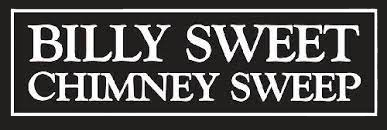
 When mortars crack, flake, and fall away, the bricks can become unstable and even loosen completely. This is called spalling, and it can eventually result in crumbling brick and mortar, which can become a serious hazard if you don’t address it timely. If you notice cracking mortar, gapped masonry, or brick pieces on the roof or yard below, you need to call a certified professional right away to address the proper repairs.
When mortars crack, flake, and fall away, the bricks can become unstable and even loosen completely. This is called spalling, and it can eventually result in crumbling brick and mortar, which can become a serious hazard if you don’t address it timely. If you notice cracking mortar, gapped masonry, or brick pieces on the roof or yard below, you need to call a certified professional right away to address the proper repairs.

